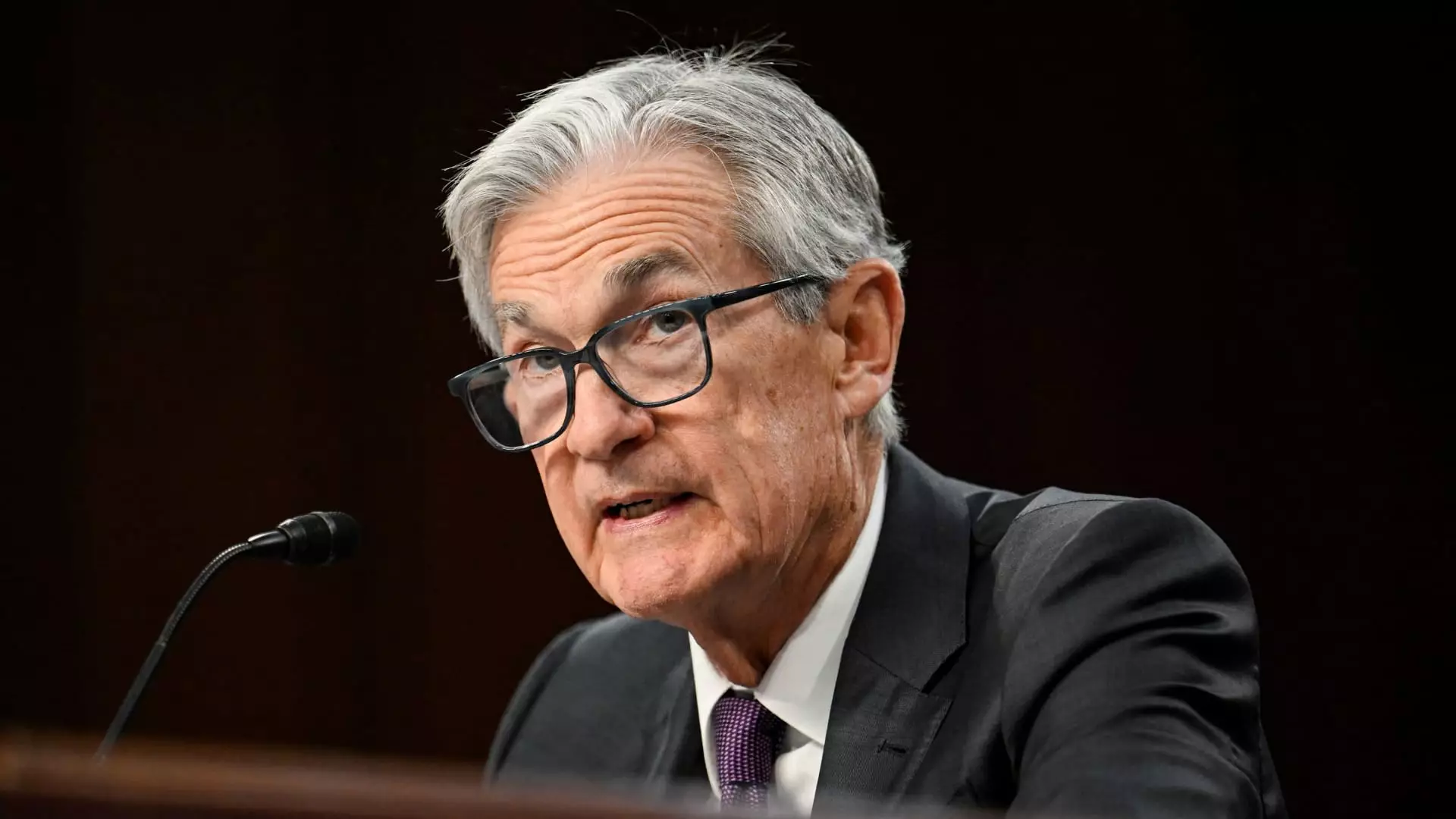In the complex interplay between politics and economics, Federal Reserve Chairman Jerome Powell’s recent statements delve deep into an environment fraught with unpredictability. His insistence on a cautious approach to adjusting interest rates amidst President Trump’s shifting policy changes is telling of an economic landscape grappling with unprecedented uncertainty. As the Fed navigates tumultuous waters, it’s imperative for policymakers to shift gears, shedding light on how political narratives can directly influence economic realities.
Market responses reflect a growing nervousness that cannot be dismissed. With Trump’s aggressive tariff proposals sparking concerns, many financial analysts have plotted out expectations of interest rate cuts, anticipating a pivot toward easing monetary pressure. A projection that sees three quarter-point reductions towards year-end underscores a sentiment that strays far from Powell’s willingness to adopt a more measured approach. While his rhetoric speaks to the need for patience, there is a glaring mismatch between those words and market expectations, thrusting the Fed into a potentially precarious position.
The Key Role of Political Schemes
Powell emphasized the importance of trade, immigration, fiscal policy, and regulation as pivotal areas currently undergoing significant shifts. However, while policymakers at the Fed utter reassurances, they neglect a critical aspect: how these policy changes are felt on the ground level. Economic indicators, such as employment rates and inflation figures, are paradoxically strong; yet public sentiment reveals unease. The Fed’s ambivalence in the face of potentially drastic changes raises a haunting concern: are we overestimating our economic resilience, or worse yet, are we ill-prepared for volatile fallout from these sweeping policy shifts?
The effort to elaborate on separating “signal from noise” in an environment saturated with policy noise seems almost naïve. Economic narratives shaped by political rhetoric often muddy the clarity that monetary policymakers strive for. A perspective of this illness emanates from acknowledging that while unemployment remains low and wages are growing, the public is inundated with a barrage of political communications that can provoke anxiety and erode consumer confidence.
The Dangers of Complacency
It is essential to confront the dual-edged reality that underlies Powell’s assertion that the Fed is “well positioned to wait.” As central bank policymakers maintain a hopeful outlook, an unsettling reality looms: continued hesitation could be a recipe for stagnation. Inflation metrics might hover around the Fed’s target, yet Executive decisions, particularly those related to tariffs, pose a volatility that could undermine this progress. The labor market may appear solid, but are we truly prepared for how quickly political decisions can alter economic conditions?
Federal Governor Adriana Kugler’s remarks add another layer where caution is warranted. Her warning of “important upside risks for inflation” hints at the unseen consequences of policy mistakes made in haste. Decisions centered solely around an optimistic viewpoint often lead to complacency, and complacency can breed crisis.
The Case for a Proactive Stance
Instead of simply awaiting clarity, the Fed must adopt a proactive approach that incorporates political realities into its decision-making framework. The challenges posed by rapid policy changes necessitate a more nuanced perspective: one that predicts economic shifts and prepares to respond accordingly rather than simply reacting to the fallout. Waiting for clarity may serve the Fed in the short term, but continued deferment risks magnifying economic dislocations down the road.
As the economy maintains a “good place,” according to Powell, the narrative surrounding said “good place” must not overlook the societal impact of current policies. Americans must not be left to navigate the uncertain waters created by political maneuverings with inadequate support. The central bank must engage in comprehensive dialogue not just about metrics, but about the far-reaching implications of its actions and inactions.
Monetary policy shouldn’t exist in a vacuum; it is inextricably linked to the world of political debate and social sentiment. The need of the hour is an adaptable Fed aware of the dynamics at play rather than an institution entrenched in the comfort of an outdated paradigm. History has shown us that economic policies driven solely by theoretical models often falter when faced with real-world disturbances. A reality check is essential, and the time for proactive engagement is now.

